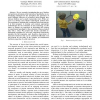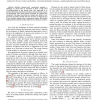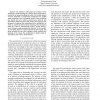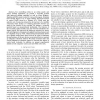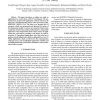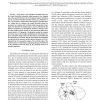ROMAN
2007
IEEE
14 years 5 months ago
2007
IEEE
Robot Programming by Demonstration (RbD) covers methods by which a robot learns new skills through human guidance. In this work, we take the perspective that the role of the tea...
ROMAN
2007
IEEE
14 years 5 months ago
2007
IEEE
— We are currently investigating the use of rhythm and synchrony in human-robot interaction. Specifically, we are developing techniques for the perception and generation of soci...
ROMAN
2007
IEEE
14 years 5 months ago
2007
IEEE
— For a robot to understand a scene, we have to infer and extract meaningful information from vision sensor data. Since scene understanding consists in recognizing several visual...
ROMAN
2007
IEEE
14 years 5 months ago
2007
IEEE
— Intuitive human-robot cooperation presents a challenge to robots since it demands of them a high level of understanding of the human user. Our approach is to estimate the human...
ROMAN
2007
IEEE
14 years 5 months ago
2007
IEEE
— We address in this paper the problem of the autonomous online learning of a sensory-motor task, demonstrated by an operator guiding the robot. For the last decade, we have deve...
ROMAN
2007
IEEE
14 years 5 months ago
2007
IEEE
–This paper presents a novel affect-sensitive human-robot interaction framework for rehabilitation of children with autism spectrum disorder (ASD) where the robot can detect the ...
ROMAN
2007
IEEE
14 years 5 months ago
2007
IEEE
— For controlling robots in an urban search and rescue (USAR) application, we present a wearable joystick with improved sensing capability as well as Giant MagnetoResistance(GMR)...
ROMAN
2007
IEEE
14 years 5 months ago
2007
IEEE
– The paper introduces an online user study on applications for social robots with 127 participants. The potential users proposed 570 application scenarios based on the appearanc...
ROMAN
2007
IEEE
14 years 5 months ago
2007
IEEE
— We propose a novel design of artificial robot ear for sound direction estimation using measured two outputs only. The spectral features in head-related transfer functions and i...
ROMAN
2007
IEEE
14 years 5 months ago
2007
IEEE
— We investigate modeling and recognition of arm manipulation actions of different levels of complexity. To model the process, we are using a combination of discriminative suppor...

